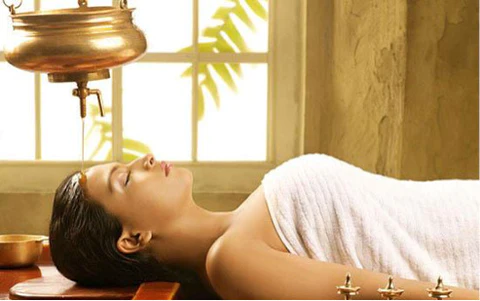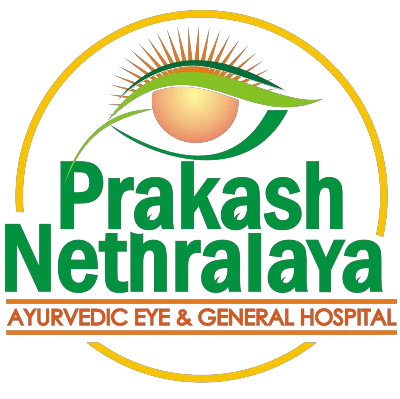Ayurvedic Treatment of Ptosis
Lift up the upper eyelid from over the eyes naturally with Ayurvedic Treatment & Panchakarma Procedures
Ayurvedic Treatment of Ptosis
Lift up the upper eyelid from over the eyes naturally with Ayurvedic Treatment & Panchakarma Procedures
Table of Contents
Toggle
Ptosis is a disorder when the upper eyelid droops over the eye. The eyelid may droop just a little, or so much that it covers the pupil. Ptosis can partially or even completely block normal vision.
Children and adults can have ptosis. It can occur in one eye or both eyes at the same time. Sometimes it is a problem that changes a person’s appearance without affecting vision or health. In other cases, it can only be a warning sign that a more serious condition is affecting the muscles, nerves, brain or eye socket. Ptosis can be present at birth (congenital) or develop later in life (acquired).
It can be corrected with proper treatment that may not be necessary in cases where there is no impact on vision.
Types of Ptosis
Neurogenic Ptosis
It is the type that includes oculomotor nerve palsy, Horner's syndrome, Marcus Gunn jaw winking syndrome, third cranial nerve misdirection.
Acquired Ptosis
This type of ptosis can be acquired during a lifetime.
Aponeurotic Ptosis
Aging is the most common cause of ptosis that is not present at birth. In this, the long-term effects of gravity and ageing cause stretching of a wide, tendon-like tissue that helps the muscle to lift the eyelid. Although both eyes usually are affected, drooping may be worse in one eye.
Congenital Ptosis
In this condition, an infant is born with ptosis because of a developmental problem involving the muscle that raises the upper eyelid and its muscles. In approximately 70% of cases, the condition affects only one eye.
Causes of Ptosis
Ptosis causes are common and are listed below:
- Congenital ptosis is caused by genetic inheritances.
- Excessive eye rubbing.
- Use of rigid contact lenses.
- Eye surgery.
- Eyelid tumours, cysts, or swelling.
- Horner’s syndrome.
- Ageing.
- Muscular problems.
- Nerve damage in the eye muscles.
- Neurological conditions.
- Eye trauma.
- The weakness of the eyelid muscles or eye nerve problems.
- Botox injections.
Risk Factors
People at risk for developing ptosis include those with eye tumours, diabetes, history of stroke, cancer, and neurological disorders. Older people are at risk because ageing sometimes causes the eye muscles to weaken.
- The person with contact lenses.
- Wearing contact lenses can increase the risk of developing ptosis.
- Age
- Contact lenses
- Excessive eye rubbing
- Eye surgery
- Horner’s syndrome
- Myasthenia gravis
Home Remedies for Ptosis
Ptosis natural treatment at home can be done with the help of the following remedies:
- Do mild massage over closed eyelids with the same oil and also head massage.
- Tea tree oil – Apply a mixture of 2 drops of tea tree essential oil and 1/2 teaspoon of coconut oil to your eyelids.
- Black tea- Researchers suggest that the anti-inflammatory and antibacterial properties of black tea to are used to treat ptosis.
- Put 2 drops of cow ghee at bedtime.
Preventions/Lifestyle for Ptosis
Ptosis cure can also be possible by inculcating some lifestyle changes and following few preventive measures in your daily routine such as:
- Do warm compresses for 15 minutes, four times a day for 7-10 days.
- Application of mild eye drops or ointment.
- Gentle cleaning of the eyelids with a warm, wet washcloth should be done regularly.
- Avoid fast food and junk food.
- Clear the bowels.
- Avoid refrigerated and packaged foods.
- Do regular yoga and Pranayam.
Diagnosis and Ptosis Treatment in Ayurveda
Ptosis eye treatment can only be done if the cause of the disease is known and understood. Usually, it is caused by Vata dosha aggravation in the body. There are various ptosis eye treatment in Ayurveda that are known to provide benefits such as Shirodhara, Tharpana, nasya, and Nethradhara procedures. These are done with Vata pacifying drugs.
Yoga and pranayama are also included to aid faster recovery. The procedures are done continuously for 15-20 days. Some of the ptosis natural treatments are described below:
- Shirobasti – In the Shirobasti process, a long cap, open at the top, is fitted around the patient’s head. Through the top opening, warm herbal medicated oils are poured onto the head. The oil is retained for some period.
- Nethradhara – This process includes washing the eyes with freshly prepared medicated decoctions for strengthening the muscles of the upper eyelids.
- Netra Basti – This therapy is one of the best ptosis cures in Ayurveda, used to reduce eye stress. The eyes are bathed to remove any congested secretion. A dough dam is built up around the eye and a warm medicated ghee is slowly poured into the dam, bringing peace and nourishment to the eyes.
- Netra Trapana – Netra Tarpana is used because it acts as both preventive and corrective treatment. A mixture made of gram flour is pasted around both the eyes and drugs are poured onto it such that the drug does not spill from the batter which is set around the eyes.

Symptoms of Ptosis
The main signs and symptoms of ptosis are as follows:
- One or both eyelids droop. It can block your sight.
- Lazy eye can also be a symptom of ptosis. That’s a poor sight in an eye that didn’t develop normally during childhood.
- Migraine can also be a symptom.
- One may also have extremely dry or watery eyes, and you may notice that your face looks weary or tired.
- The main areas to be affected will be around the eyes, and you may experience aching, which can also cause you to look tired.
- Few people with severe ptosis may have to tilt their heads back in order to see at all times even when holding a normal conversation.
The Benefits of Ayurveda for Ptosis treatment at Prakash Nethralaya
Investigates The Root Cause
The Ayurvedic approach to illness looks for the fundamental causes of the disease rather than symptoms. The main causative factor of the disease is removed from the patient's daily routine. Once the diagnosis is confirmed, treatment is decided from the available two directions as per the classics. First one is Shodhan (detoxification) to clean the body with the help of Panchakarma therapies and the another is Shaman (balancing the doshas) by using Ayurveda medicines, diet correction and lifestyle adjustments. Detoxification with Panchakarma improves the efficacy of Ayurveda medicines in chronic and advanced cases.
Medicines Are Safe To Take
Ayurveda medications are not manufactured in a synthetic or chemical form but in their natural state. Because of this, the herbs are gentle on the body, and there is no chance of side effect or adverse reactions, regardless of the length of time the patient takes them. At Prakash Nethralaya, we use the best quality Ayurveda medicines to ensure the safest and fastest recovery. There is in house processing and dispensing of the medicines for our patients. A few medicines are made available from the good manufacturing companies also.
Uses Holistic Strategy
Ayurveda is based on the idea that each person has a distinct personality and body type and, as a result, their treatment. Ayurveda places more emphasis on treating the patient rather than treating the ailment. The physical composition of two different people with the same ailment may need a different therapeutic approach. An Ayurveda expert at Prakash Nethralaya uses this body type analysis and then reaches at a conclusion of diagnosis and the line of treatment. Accordingly our doctors prescribe the diet, lifestyle changes, yoga, Ayurveda medicines, and Panchakarma therapies.
